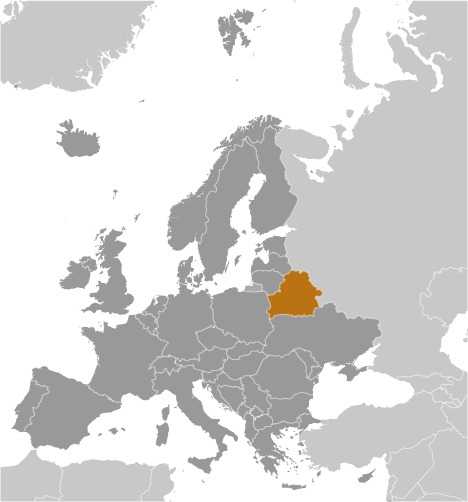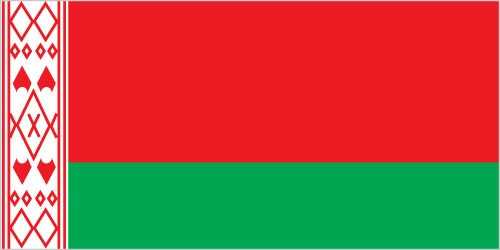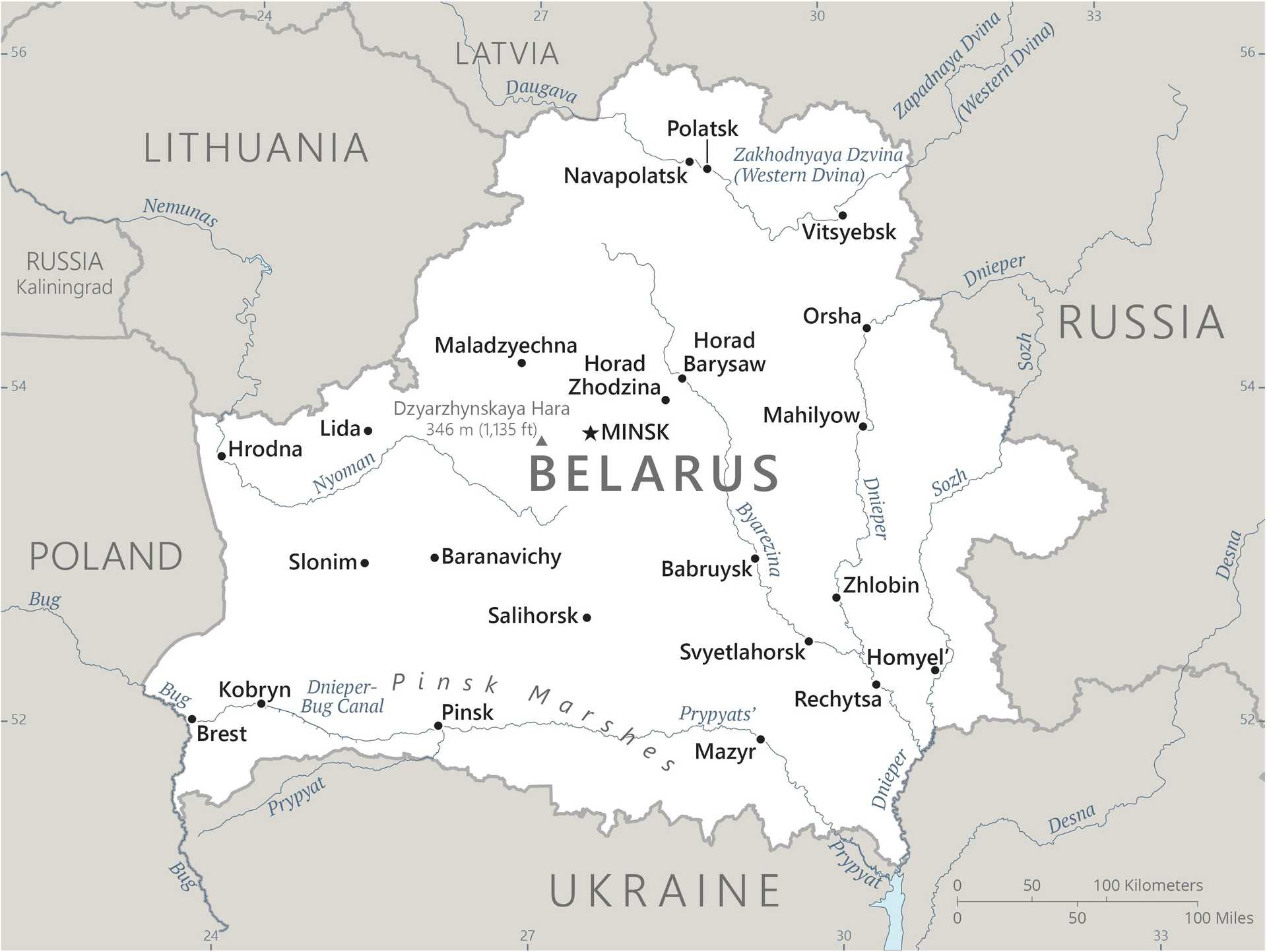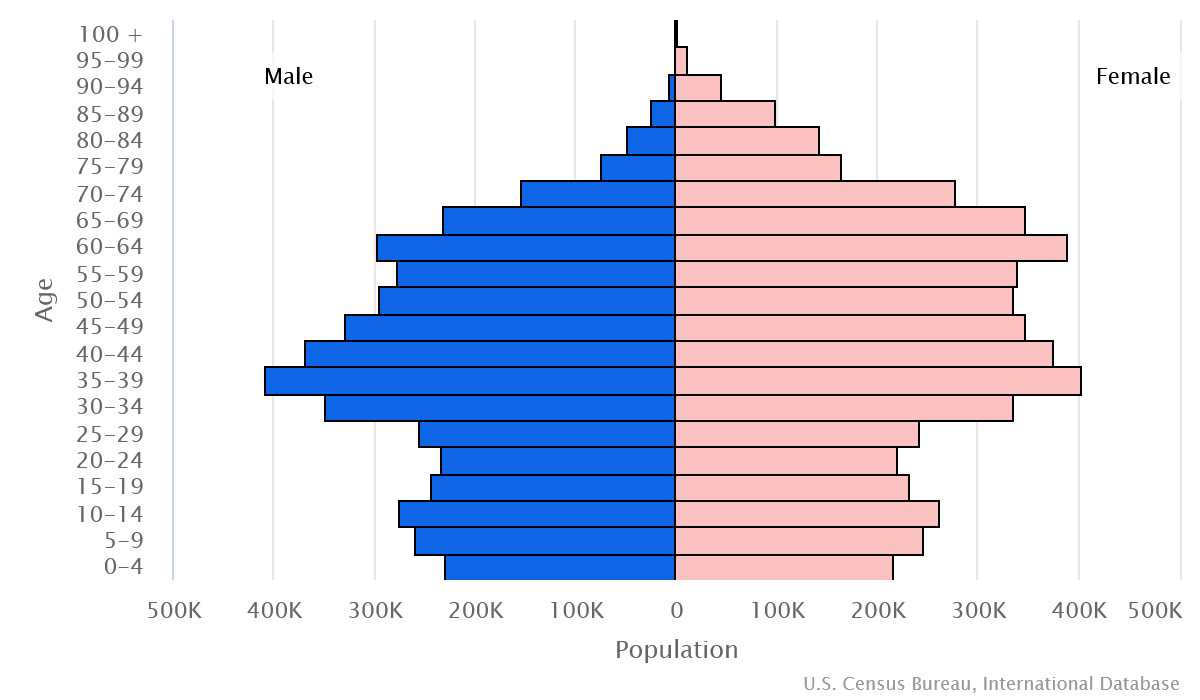Introduction
Background
After seven decades as a constituent republic of the USSR, Belarus attained its independence in 1991. Government restrictions on political and civil freedoms, freedom of speech and the press, peaceful assembly, and religion have remained in place under President Alyaksandr LUKASHENKA.
Geography
Area
total: 207,600 sq km
land: 202,900 sq km
water: 4,700 sq km
Climate
cold winters, cool and moist summers; transitional between continental and maritime
Natural resources
timber, peat deposits, small quantities of oil and natural gas, granite, dolomitic limestone, marl, chalk, sand, gravel, clay
People and Society
Population
total: 9,501,451
male: 4,433,839
female: 5,067,612 (2024 est.)
Ethnic groups
Belarusian 83.7%, Russian 8.3%, Polish 3.1%, Ukrainian 1.7%, other 2.4%, unspecified 0.9% (2009 est.)
Languages
Russian (official) 71.4%, Belarusian (official) 26%, other 0.3% (includes small Polish- and Ukrainian-speaking minorities), unspecified 2.3% (2019 est.)
Religions
Orthodox 48.3%, Catholic 7.1%, other 3.5%, non-believers 41.1% (2011 est.)
Population growth rate
-0.42% (2024 est.)
Government
Government type
presidential republic in name, although in fact a dictatorship
Capital
name: Minsk
Executive branch
chief of state: President Alyaksandr LUKASHENKA (since 20 July 1994)
head of government: Prime Minister Roman GOLOVCHENKO (since 4 June 2020); First Deputy Prime Minister Mikalay SNAPKOW (since 4 June 2020); Deputy Prime Ministers Ihar PETRYSHENKA (since 18 August 2018), Anatol SIVAK (since 1 September 2020), Leanid ZAYATS (since 21 March 2022), Petr PARKHOMCHYK (since 16 August 2022)
Legislative branch
description: bicameral National Assembly or Natsyyalny Skhod consists of:
Council of the Republic or Savet Respubliki (64 seats statutory, currently 58; 56 members indirectly elected by regional and Minsk city councils and 8 members appointed by the president; members serve 4-year terms)
House of Representatives or Palata Pradstawnikow (110 seats; members directly elected in single-seat constituencies by absolute majority vote in 2 rounds if needed; members serve 4-year terms)
Economy
Economic overview
declining Russian energy subsidies will end in 2024; growing public debt; strong currency pressures have led to higher inflation; recent price controls on basic food and drugs; public sector wage increases and fragile private sector threaten household income gains and economic growth
Real GDP (purchasing power parity)
$176.183 billion (2022 est.)
$184.867 billion (2021 est.)
$180.466 billion (2020 est.)
Real GDP per capita
$19,100 (2022 est.)
$19,900 (2021 est.)
$19,200 (2020 est.)
Agricultural products
milk, sugar beets, potatoes, wheat, triticale, barley, maize, rapeseed, rye, apples (2022)
Industries
metal-cutting machine tools, tractors, trucks, earthmovers, motorcycles, synthetic fibers, fertilizer, textiles, refrigerators, washing machines and other household appliances
Exports
$46.846 billion (2022 est.)
$49.435 billion (2021 est.)
$37.183 billion (2020 est.)
Exports - partners
China 15%, Ukraine 12%, Poland 9%, Kazakhstan 8%, Lithuania 8% (2022)
Exports - commodities
fertilizers, refined petroleum, rapeseed oil, wood, beef (2022)
Imports
$42.28 billion (2022 est.)
$45.465 billion (2021 est.)
$35.236 billion (2020 est.)
Imports - partners
China 26%, Poland 15%, Germany 12%, Lithuania 12%, Turkey 9% (2022)
Imports - commodities
cars, packaged medicine, fabric, plastic products, vehicle parts/accessories (2022)
Exchange rates
Belarusian rubles (BYB/BYR) per US dollar -
Exchange rates:
2.626 (2022 est.)
2.539 (2021 est.)
2.44 (2020 est.)
2.092 (2019 est.)
2.038 (2018 est.)
Page last updated: Tuesday, May 07, 2024




